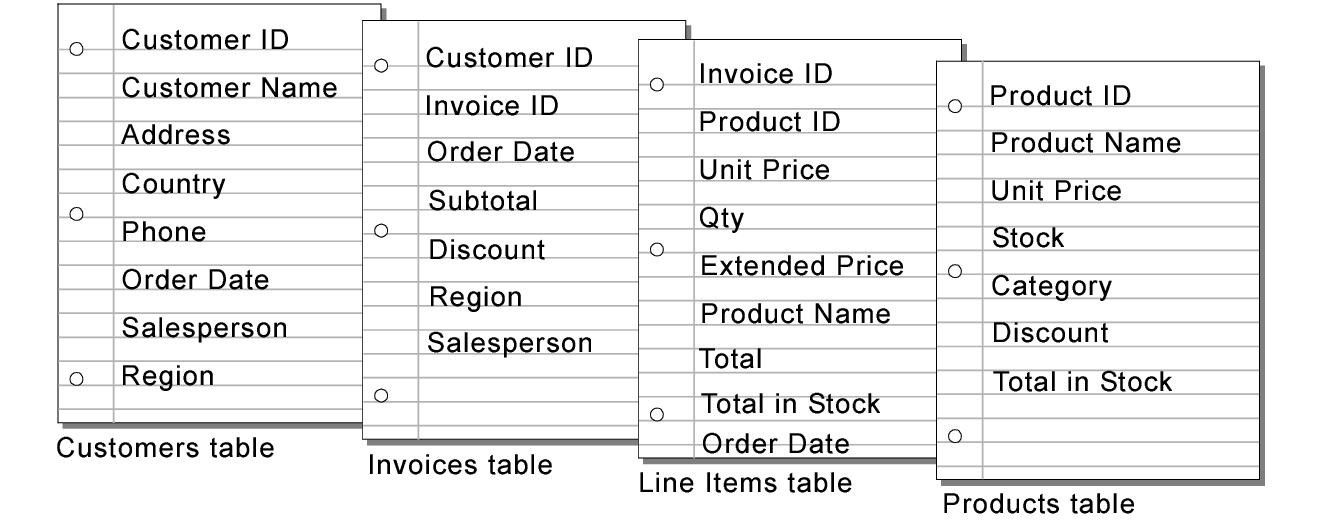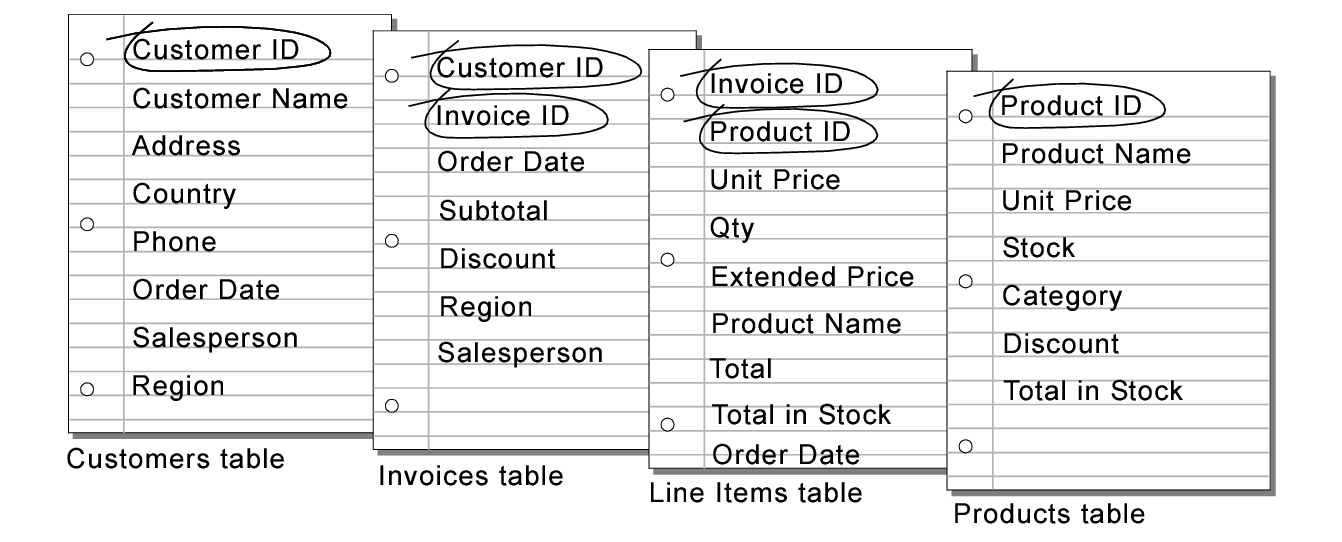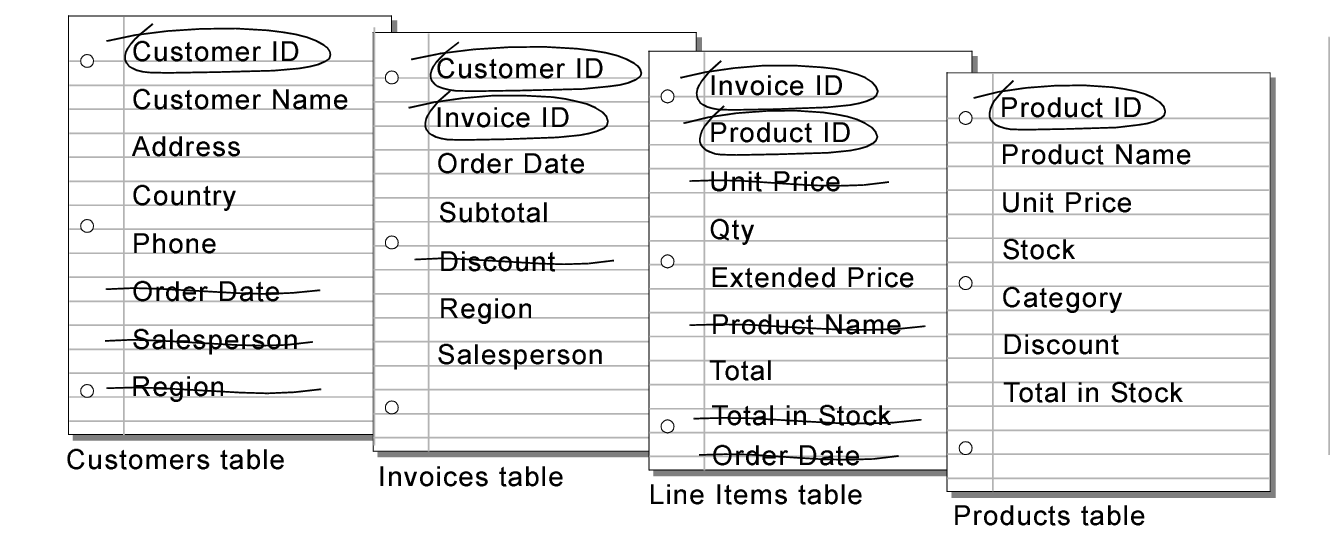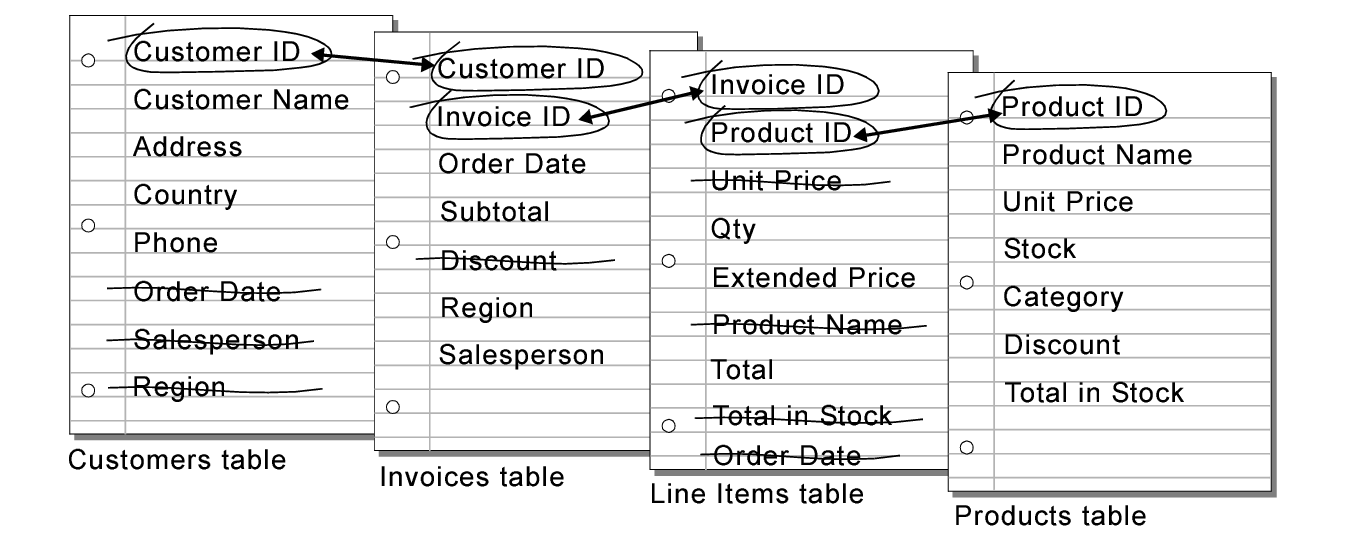About planning a database
In database terminology, these categories of information are referred to as tables. Tables are used to group data containing a common element or purpose. For example, you might use one table to store names and addresses, while you use another table to store transaction details, such as date of sale, item number, unit price, and so on.
Use relationships to share data between tables in the same file or with tables in external files. Other database elements, such as scripts and access privileges, are stored at the file level; therefore, some complex solutions will benefit from using multiple files.
Note FileMaker Pro is very flexible, so the decision to store data in a single file or in multiple files is often one of packaging and convenience. Data stored in tables is very easily shared between tables in the same file and tables in external files using relationships, as explained in Working with related tables and files. Other elements, such as scripts and access privileges, are stored at the file level, and because of this some complex solutions will benefit from using multiple files.
|
5.
|
Relationships also make it possible to group your data to resolve complex queries. For example, relationships can be used to determine current inventory levels, sales projections, and other tasks where it is necessary to query data across multiple tables. See Working with related tables and files.
|
10.
|
Determine whether you need to share your database with other users, and how they will access the file.
|
|
12.
|
|
13.
|
Decide what layouts you need, and plan a separate layout for each task.
|



